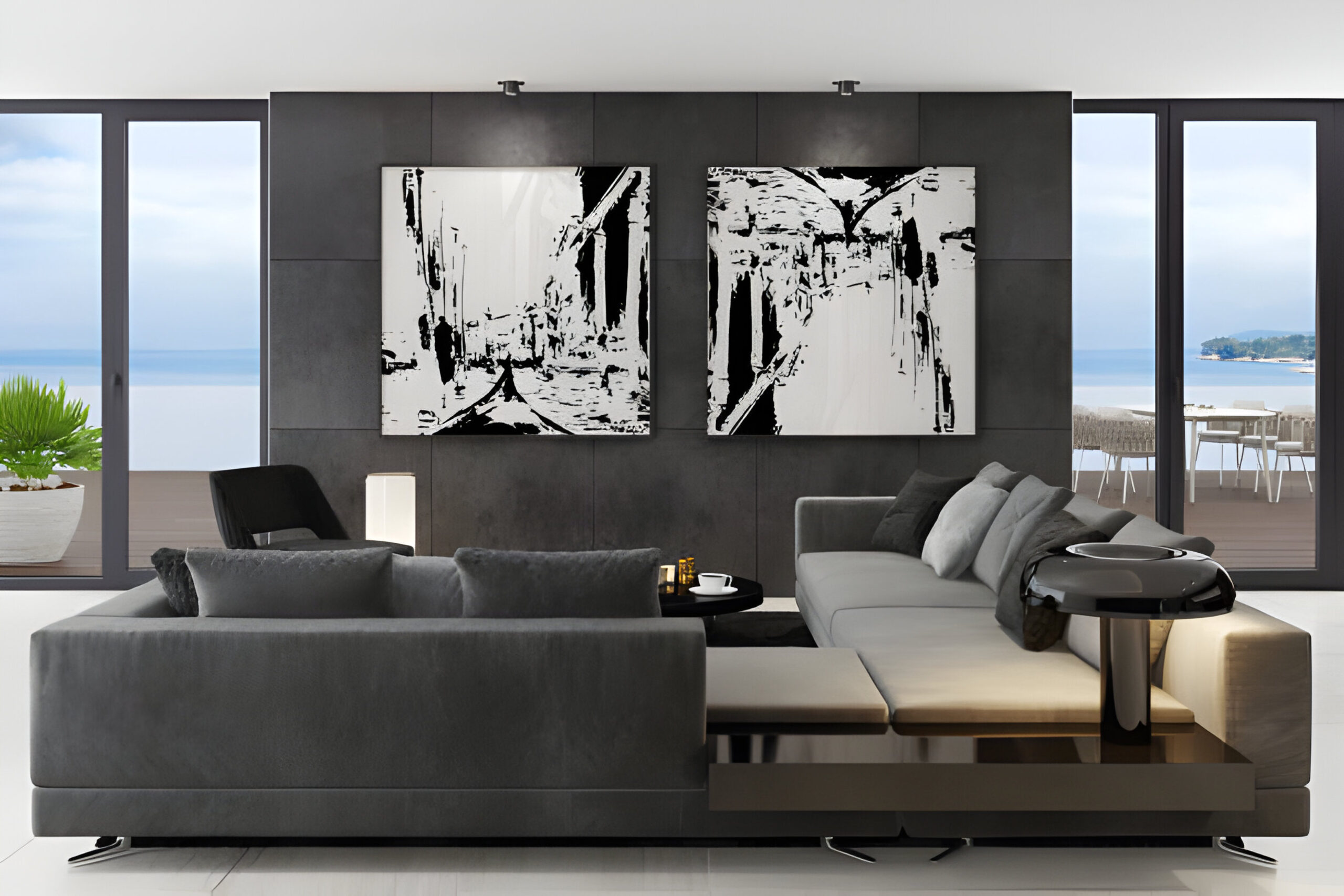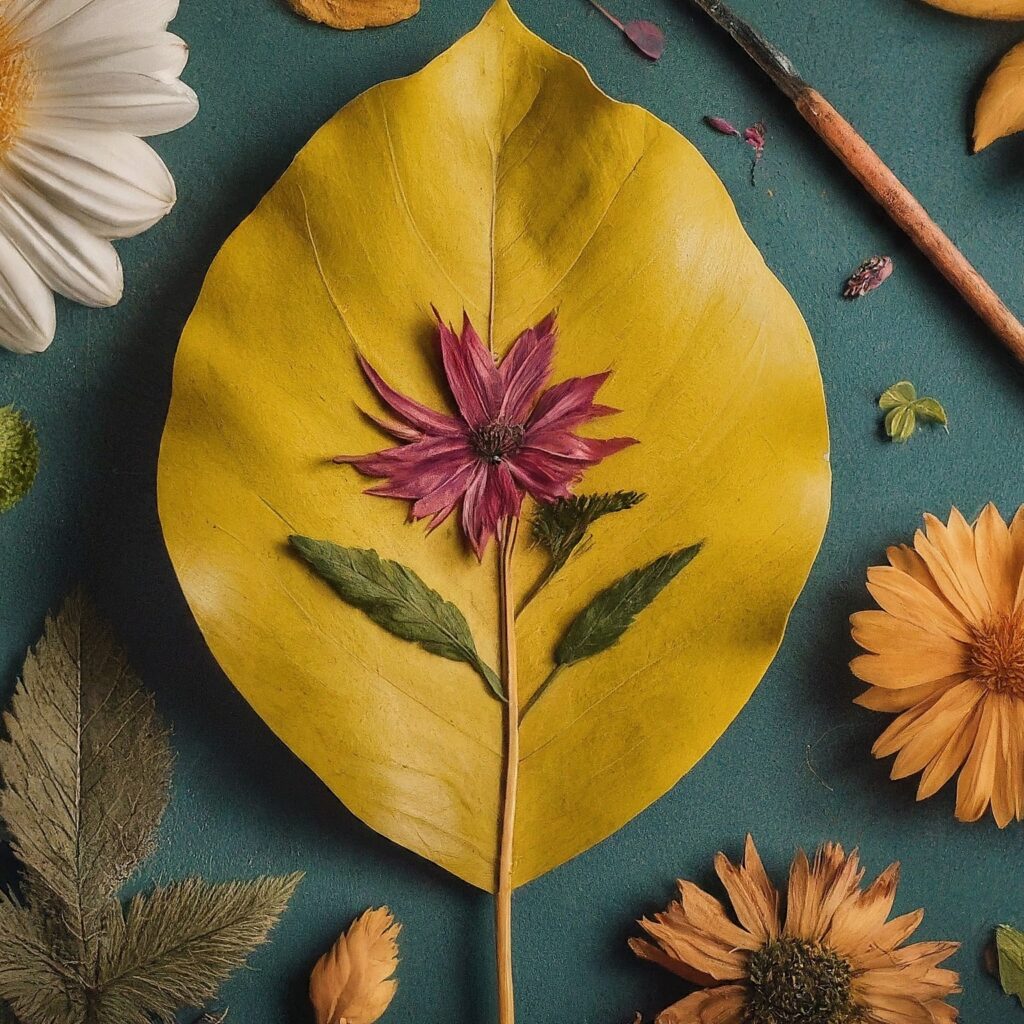
Introduction
Leaf artwork, a captivating art form that utilizes the natural beauty of leaves, has captivated artists and nature enthusiasts for centuries. From their intricate veins and vibrant colors to their unique shapes and textures, leaves offer a wealth of inspiration for creating stunning works of art. This comprehensive guide delves into the world of leaf artwork, exploring its various techniques, applications, and the enduring appeal of this art form that celebrates the wonders of nature.
Table of Contents
What is Leaf Artwork?
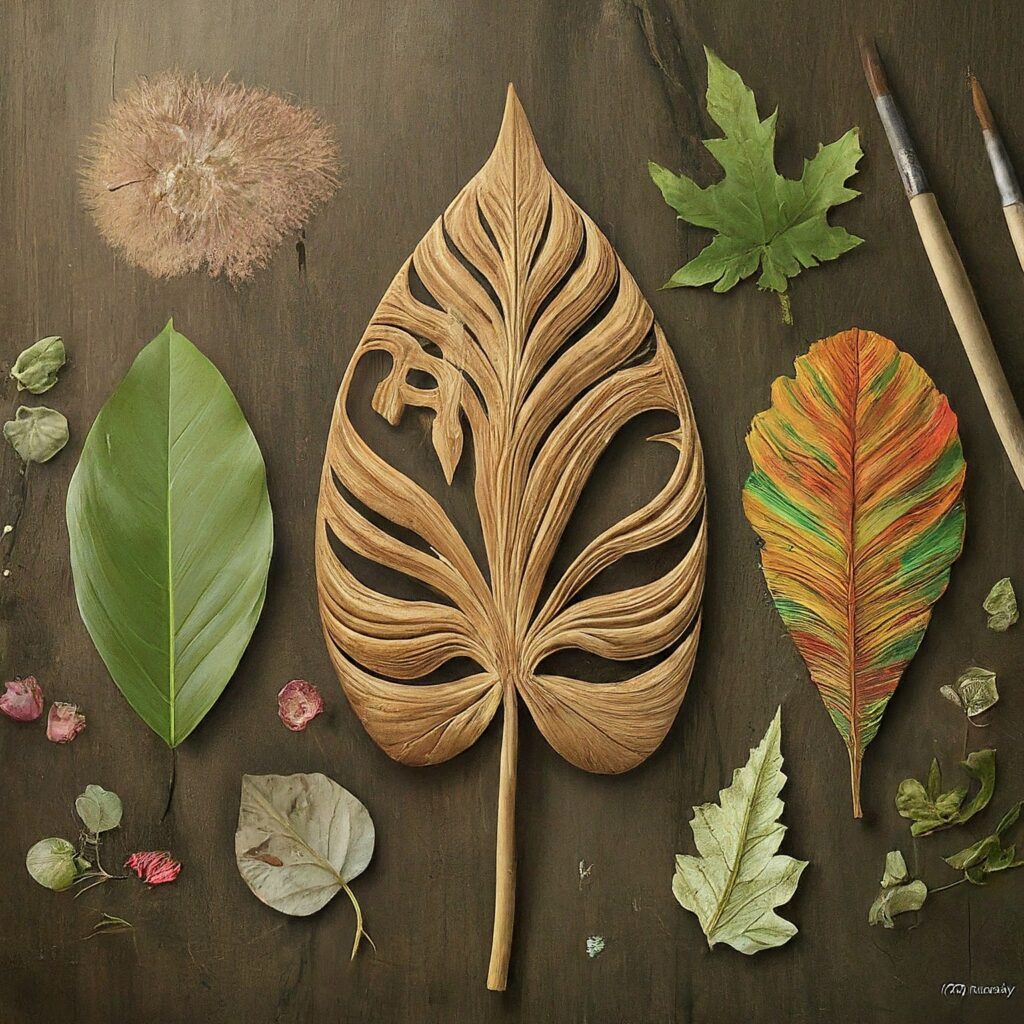
Leaf artwork is the practice of using leaves as the primary artistic medium to create visually stunning and captivating pieces. Leaves, with their inherent beauty and diversity, provide artists with a unique and natural palette. Their vibrant hues, ranging from emerald greens to fiery oranges and deep reds, offer a spectrum of colors. The intricate network of veins that crisscrosses each leaf creates a mesmerizing pattern, while the varied shapes and textures add depth and dimension to the artwork.
Leaf artwork is more than just crafting with found objects; it’s a celebration of nature’s artistry. Leaves, in their transient existence, symbolize the ever-changing seasons and the beauty of the natural world. By transforming these fallen leaves into lasting works of art, artists capture a fleeting moment in time and preserve the essence of nature.
A Journey Through Time: The History of Leaf Artwork
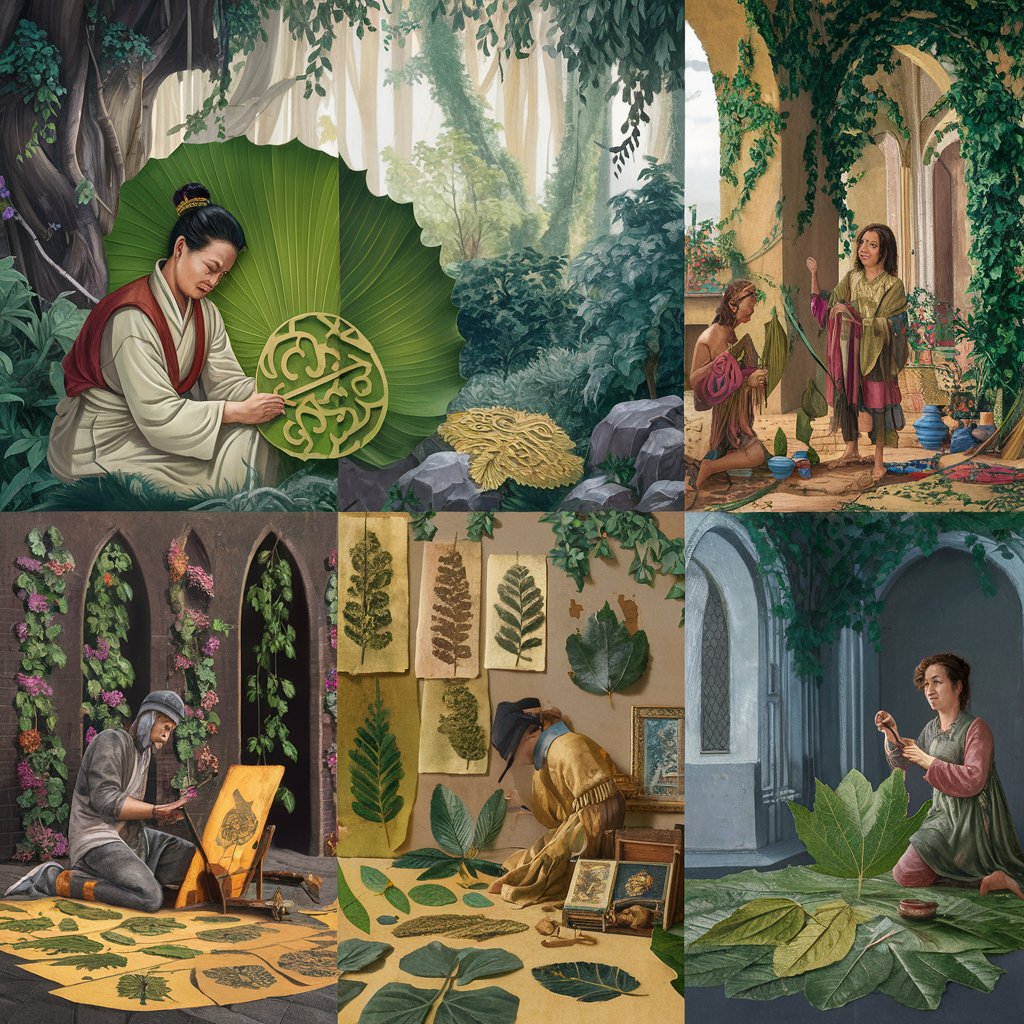
The history of leaf artwork stretches back centuries, with various cultures around the world embracing this unique art form. Evidence suggests that early civilizations, from ancient China to pre-Columbian America, utilized leaves for decorative purposes. Leaves were used to create intricate patterns on textiles, woven into baskets, and even employed in religious ceremonies.
In the Western world, the practice of leaf artwork gained significant traction during the Victorian era. The Victorians, known for their love of nature and meticulous craftsmanship, championed this art form. They employed various techniques, such as leaf pressing and skeletonization, to create detailed botanical illustrations and decorative pieces.
The 20th and 21st centuries witnessed a resurgence in leaf artwork. Modern artists continue to explore this medium, pushing the boundaries of creativity and incorporating innovative techniques. Leaf artwork has found its place in contemporary art galleries, with artists employing leaves to create thought-provoking installations and mixed-media pieces.
Today, leaf artwork enjoys widespread popularity, not just among professional artists but also as a cherished hobby for individuals and families. The accessibility and versatility of this art form make it perfect for anyone who wants to connect with nature and express their creativity.
Unveiling the Artist’s Palette: Techniques in Leaf Artwork
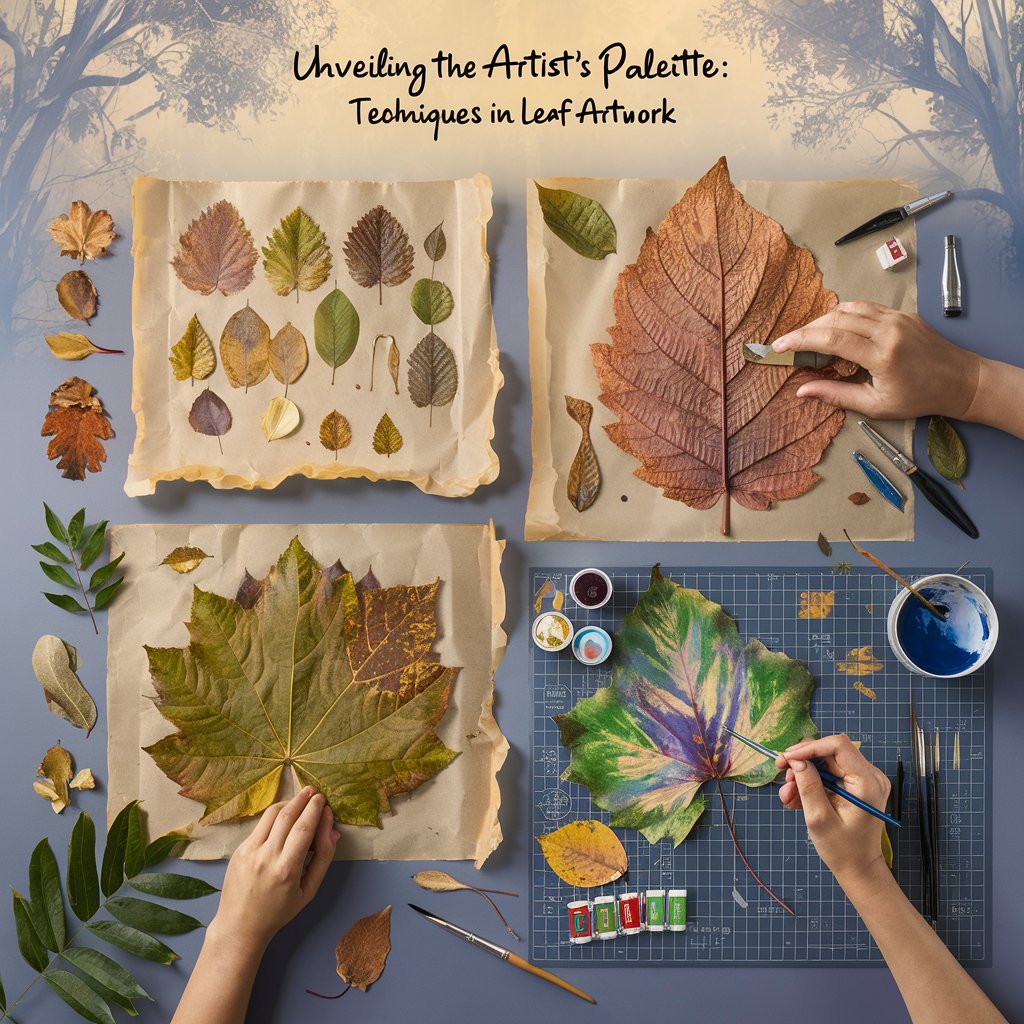
The world of leaf artwork boasts a diverse range of techniques, each offering unique creative possibilities. Here, we explore some of the most popular techniques employed in crafting beautiful leaf artwork:
Nature’s Paintbrush: Leaf Pressing
Leaf pressing is a fundamental technique in leaf artwork. It involves carefully arranging and drying leaves between absorbent materials, such as blotting paper or newspaper. The pressing process flattens the leaves and preserves their natural colors and delicate details. Pressed leaves can then be used for a variety of purposes, such as creating collages, botanical illustrations, or decorative book covers.
Tips for Leaf Pressing:
Select healthy leaves with vibrant colors and interesting shapes.
Arrange the leaves carefully on absorbent material to avoid overlapping.
Place heavy weights on top of the pressed leaves to ensure even pressure.
Allow the leaves to dry completely for several weeks, depending on their thickness.
Capturing the Essence: Leaf Rubbings (continued)
The resulting leaf rubbing reveals a beautiful imprint of the leaf’s delicate veins, offering a unique perspective on its structure. Leaf rubbings can be used as standalone artwork or incorporated into mixed-media pieces for added texture and detail.
Tips for Leaf Rubbings:
Choose leaves with prominent veins for a more defined impression.
Experiment with different colors of crayons or pencils to create contrasting effects.
Layer multiple leaf rubbings to create a more complex and visually engaging piece.
A Dance of Light and Shadow: Leaf Cutouts
Leaf cutouts offer a playful approach to leaf artwork. This technique involves cutting out shapes from leaves, creating silhouettes or intricate designs. The resulting cutouts can be used to create stunning window decorations, mobiles, or even layered collages.
Tips for Leaf Cutouts:
Use sharp craft scissors or a craft knife for precise cuts.
Choose leaves with a sturdy texture that can hold their shape after cutting.
Layer different colored leaves to create a sense of depth and dimension.
Beyond the Leaf: Branching Out with Mixed Media
Leaf artwork can extend beyond the use of leaves alone. The beauty of this art form lies in its versatility and the ability to combine leaves with other mediums to create truly unique pieces.
To help you get creative, consider these inspiring ideas:
Leaf and Paint: Paint a background scene on canvas or paper and then incorporate pressed leaves to add texture and natural elements.
Leaf and Fabric: Sew dried leaves onto fabric to create decorative wall hangings, pillowcases, or table runners.
Leaf and Clay: Press leaves onto wet clay to create textured imprints for jewelry pieces, sculptures, or decorative tiles.
The possibilities for mixed-media leaf artwork are endless. By incorporating other materials like twigs, pebbles, or dried flowers, artists can create stunning and multidimensional pieces that celebrate the abundance of nature.
A Canvas of Possibilities: Applications of Leaf Artwork
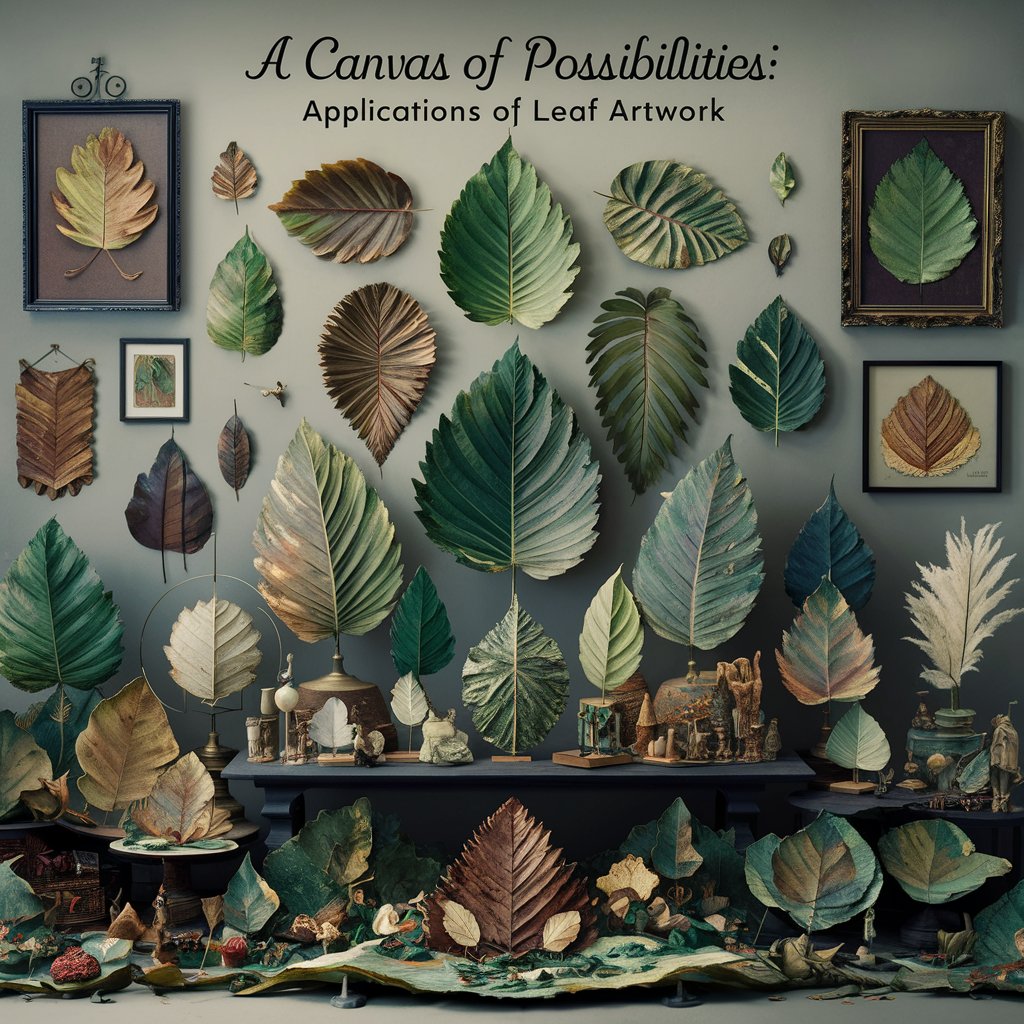
Leaf artwork transcends the realm of artistic expression and finds application in various creative endeavors.
Wall Art: Breathing Life into Your Space
Leaf artwork makes for stunning and unique wall art. Pressed leaves arranged in collages, framed leaf rubbings, or intricate leaf cutouts all add a touch of natural beauty and conversation starter to any room. Whether displayed individually or as part of a gallery wall, leaf artwork brings the essence of the outdoors into your living space.
Greeting Cards: A Touch of Nature’s Charm
Handmade greeting cards featuring pressed leaves or leaf rubbings offer a personalized and heartfelt touch. The natural beauty of the leaves adds a unique charm to the cards, making them perfect for any occasion.
Jewelry: Wearable Art for Every Occasion
Leaf artwork can be transformed into beautiful and eco-friendly jewelry. Pressed leaves can be coated with a clear sealant and incorporated into pendants, earrings, or bracelets. Leaf silhouettes can also be used as design elements in metalwork jewelry pieces.
Home Decor: Nature’s Touch in Every Corner
Leaf artwork extends beyond walls and jewelry. Pressed leaves can be used to create decorative coasters, placemats, or even bookmarks. Leaf silhouettes can be incorporated into decorative throws or pillows. The possibilities for incorporating leaf artwork into home décor are limitless, allowing you to bring a touch of nature into every corner of your living space.
Preserving Nature’s Ephemeral Beauty: Tips for Working with Leaves
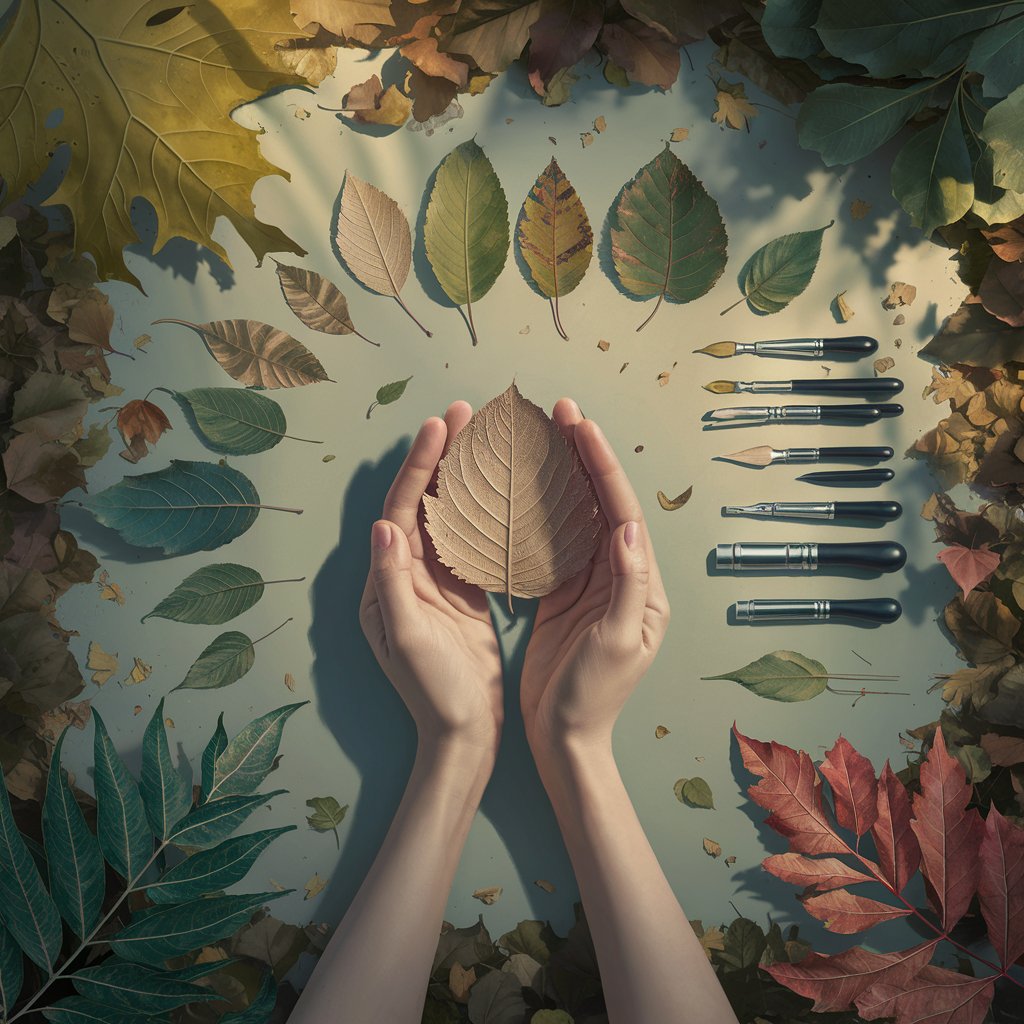
Leaves are beautiful but inherently ephemeral. To ensure your leaf artwork endures, here are some essential tips for working with leaves:
Collecting Leaves: Collect leaves that are free from blemishes, holes, or excessive damage. Choose leaves with vibrant colors and interesting shapes for the most visual impact.
Drying Techniques: The chosen technique for drying leaves will depend on the intended use.
Air Drying: For pressed leaves, air drying is a simple and effective method. Arrange leaves between sheets of absorbent paper and place them under heavy weights for several weeks.
Ironing: This method works well for quicker drying of thinner leaves. Place a leaf between two sheets of parchment paper and iron on low heat for short bursts, checking frequently to avoid burning.
Preserving Colors: Leaves naturally lose some color over time. To maintain vibrant hues, consider spraying pressed leaves with a light coat of hairspray or a clear acrylic sealer.
Storage: Store dried leaves in airtight containers in a cool, dry place away from direct sunlight to prevent further color fading and maintain their shape.
Unleashing Creativity: Inspiration for Leaf Artwork Projects

The versatility of leaf artwork allows for endless creative exploration. To help you get creative, consider these inspiring ideas:
The Serene Forest Landscape
Create a calming forest scene using a combination of techniques. Paint a background with soft greens and blues to represent the sky and distant trees. Arrange pressed leaves of various shapes and sizes to create the foreground foliage. Twigs and dried flowers can be incorporated for added texture and depth.
Whimsical Creatures Taking Flight
Transform leaves into whimsical creatures! Use leaf cutouts as the base for owls, butterflies, or even fantastical birds. Add details with paint, markers, or other materials to bring your creations to life. These charming pieces can be displayed individually or strung together as a mobile.
Abstract Explorations of Form and Texture
Embrace the abstract beauty of leaves. Experiment with overlapping pressed leaves in varying colors to create a visually captivating collage. Focus on the interplay of shapes and textures, letting the natural forms of the leaves guide your composition. This technique allows for a more interpretive and creative approach to leaf artwork.
Frequently Asked Questions (FAQs) about Leaf Artwork
Q: What type of leaves are best for leaf artwork?
A: The best leaves for artwork depend on the desired effect. Broad leaves with interesting veins work well for leaf rubbings and pressings. Sturdier leaves are better suited for cutting intricate shapes. Experiment with different types of leaves to discover their unique artistic potential.
Q: How long do pressed leaves last?
A: Properly dried and stored pressed leaves can last for several years. Applying a sealant can further extend their lifespan.
Q: Can I use fallen leaves for leaf artwork?
A: Yes, fallen leaves can be used for artwork. However, ensure they are free from mold, insects, or excessive damage.
Q: Is leaf artwork suitable for children?
A: Absolutely! Leaf artwork is a fun and engaging activity for children of all ages. It fosters creativity, appreciation for nature, and teaches valuable skills like patience and attention to detail.
Conclusion: A Celebration of Nature’s Enduring Beauty
Leaf artwork offers a unique and beautiful way to connect with nature and express your artistic vision. This accessible art form allows you to transform fallen leaves into lasting pieces of art, celebrating the ephemeral beauty of the natural world. With a little creativity and these helpful techniques, you can create stunning artwork that brings the essence of the outdoors into your home and everyday life. So, embark on your leaf art adventure, explore the diverse techniques, and let nature inspire your artistic journey!

